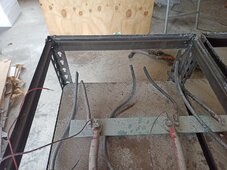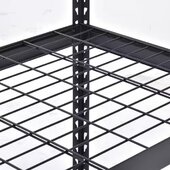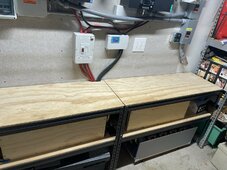When looking at the picture from the above #17 posting, it seems that
the particle board under the battery
was holding the weight
only on its edges and get warp and could not handle the weight of the battery.
A single 280 AH LiFePO4 prismatic cell weight about 5.5 kg or 12 lbs.
So a 48V battery with 16 cells will
weight about 88 kg or 195 lbs.
View attachment 197741
I recently build a rolling cart shelf to hold and carry my batteries,
and I was worried about having a single piece of particle board could handle such weight
even if the manufacturer (
The Muscle Rack) was advertising
800 lbs. per shelf.
Maybe the 18-gauge steel frame would, but not the particle board shelves.
So I started looking in another direction, and found some racks with
wire shelves:
Those shelves (
Husky Rack and Wire) (
Gladiator) (
DeWalt) can be found in majors stores,
like Home Depot, Costco, Wal-Mart..
I bought a 4-Tier rack (36 in. W x 72 in. H x 18 in. D) but I used only half of the height
to make a
3-Tier rolling cart (36 in. W x 36 in. H x 18 in. D) that I bolted on top of a
platform with
5" swivel casters, so I can easily move around
two 48V 16 Cells batteries.
Each battery has its own T-Fuse,
Nader 200A Circuit Breaker with Enclosure, and Anderson connector.
In case of a problem, the batteries could be moved quickly outside, or if they are installed outside of a house,
they could be moved back inside for doing some temporary service work.
View attachment 197746View attachment 197747






